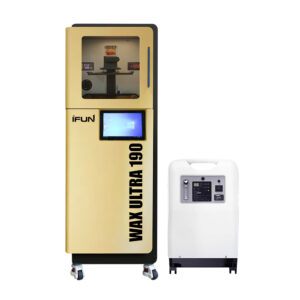Casting resin is a versatile material widely used in resin casting molds and post-processing for creating detailed and durable objects. However, one common issue that users encounter is sticky resin after the curing process. This article will explore the principles of casting resin, analyze the reasons why it might remain sticky, and provide solutions to address the problem.
Principles of Casting Resin
Casting resin is a two-part system consisting of a resin and a hardener (catalyst). When mixed in the correct ratio, a chemical reaction called polymerization occurs, transforming the liquid mixture into a solid. This process involves the formation of long molecular chains, which give the cast resin material its strength and durability.
- Types of Resin:
- Epoxy Resin: Known for its high strength and slow curing time, ideal for thick resin casts.
- Polyurethane Resin: Faster curing but sensitive to moisture.
- UV-Resin: Cures under ultraviolet light, suitable for thin layers but may struggle with deep curing.
- Curing Stages:
- Gel Stage: The resin begins to thicken but is not fully solid.
- Full Cure: The resin reaches its maximum hardness and stability.
Understanding these principles is crucial for diagnosing and resolving issues like sticky resin.
Reasons Why Casting Resin Remains Sticky
1. Insufficient Curing Time
- Standard Curing Time:
Casting epoxy resin typically requires 36-48 hours to fully cure, with some types needing up to a week. Thick casts (e.g., 2 inches deep) may require even longer due to slower heat dissipation in the center. - Early Handling:
Removing the resin from the mould for resin casting or touching it before it fully cures can leave a sticky surface.
2. Mixing Ratio and Stirring Issues
- Sensitivity to Ratios:
Clear casting resin requires precise mixing ratios (e.g., 1:1, 2:1, or 3:1). Even a 5% deviation can prevent proper curing. - Inadequate Stirring:
Insufficient mixing can lead to uneven distribution of the hardener, resulting in sticky spots.
3. Environmental Factors
- Temperature:
Ideal curing temperature is 20-24°C (68-75°F). Lower temperatures can significantly delay curing. - Humidity:
High humidity (>80%) can interfere with curing, especially for moisture-sensitive resins for casting.
4. Material Characteristics
- Resin Type:
Different resins have unique curing requirements. For example, UV resin may not cure properly in deep layers due to limited light penetration. - Hardener Issues:
Expired or improperly stored hardener can fail to initiate the curing process.
5. Process Errors
- Layering:
Pouring resin in layers thicker than recommended (e.g., >3/8 inch) can cause heat buildup and incomplete curing. - Mold Contamination:
Residual mold release for resin casting or moisture can inhibit surface curing.
6. Special Cases and Remedies
- Partial Curing:
If the surface is slightly sticky, sanding and applying a thin layer of fresh casting resin epoxy can help. - Complete Failure:
For uncured resin, solvents like acetone can be used to dissolve and remove the material.
Solutions to Prevent Sticky Resin
1. Ensure Proper Curing Time
- Wait at least 1.5 times the recommended curing time before handling the resin.
- For thick casts, consider curing in layers to avoid heat buildup.
2. Accurate Mixing and Stirring
- Use precise measuring tools to ensure the correct resin-to-hardener ratio.
- Stir thoroughly for at least 2 minutes, scraping the sides and bottom of the container.
3. Control Environmental Conditions
- Maintain a stable temperature (20-24°C) and humidity level (50-60%).
- Use a heating pad or curing chamber for low-temperature environments.
4. Choose the Right Resin
- Select a resin type suited to your project (e.g., epoxy casting resin for thick casts, UV resin for thin layers).
- Check the expiration date and storage conditions of the hardener.
5. Optimize the Process
- Pour resin in thin layers for deep molds, allowing each layer to cure before adding the next.
- Clean resin casting molds thoroughly with isopropyl alcohol and ensure they are completely dry before use.
6. Remedial Actions
- For partially cured resin, sand the surface and apply a fresh layer of resin.
- For uncured resin, use solvents or freeze the resin to remove it.
FAQ
Q1: How long does casting resin take to cure?
A: Curing time varies by resin type and thickness. Typically, it takes 36-48 hours, but thick casts may require up to a week.
Q2: Can I speed up the curing process?
A: Yes, increasing the temperature (within the recommended range) can accelerate curing. However, avoid overheating, as it can cause cracking or bubbles.
Q3: What should I do if my resin cast is still sticky after curing?
A: Check the mixing ratio, stirring technique, and environmental conditions. If the surface is slightly sticky, sand it and apply a thin layer of fresh resin.
Q4: How do I know if my hardener is still good?
A: Mix a small amount of resin and hardener. If it doesn’t cure within 24 hours, the hardener may be expired or contaminated.
Q5: Can I use UV resin for deep casts?
A: UV resin is not ideal for deep casts due to limited light penetration. Use epoxy casting resin or polyurethane resin for thicker layers.
Q6: How do I clean sticky resin from my resin casting mold?
A: Use solvents like acetone or isopropyl alcohol to dissolve the resin. For silicone molds, freezing the resin can make it easier to remove.

